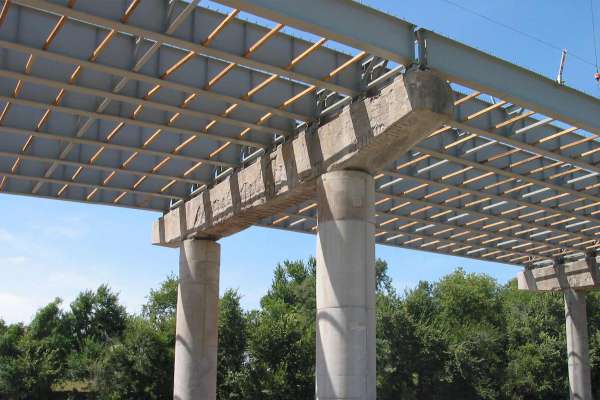Garver assists ALDOT in developing an airfield pavement maintenance program
Once airfield pavement deteriorates to the point that an overlay or complete reconstruction is required, the pavement repair costs can be five times more expensive than if the airport had utilized preventative maintenance techniques. By scheduling crack cleaning, patching and seal coating procedures before serious repairs are necessary, an airport can extend the life of its airfield surfaces and save considerable money during a pavement's life cycle.
This awareness prompted Alabama to create a statewide airport pavement maintenance program to maximize the lifespan of asphalt pavements. This program includes asphalt pavements at 75 general aviation airports. Garver, LLC evaluated the pavement at each airport and is currently working with the Alabama Department of Transportation-Aeronautics Bureau to develop a five to seven-year rotational maintenance schedule.
"This program provides ALDOT with a solid understanding of the state's pavement maintenance needs for scheduling and funding purposes," said Garver Aviation Team Leader Ryan Reed, PE. "ALDOT now has a study detailing each airfield's pavement conditions, and our services will assist ALDOT in developing a statewide proactive approach to pavement maintenance."
Airports typically make pavement maintenance and rehabilitation decisions based on pressing needs rather than long-term planning and documented data. Creating a pavement maintenance program allows the state and airport sponsors to consider multiple maintenance and repair strategies.
This panoramic approach evaluates a pavement's present situation and predicts future conditions using a standard rate of deterioration. Thus, a pavement's life-cycle cost analysis— based on various corrective alternatives—can help determine the optimal year to address defects and avoid greater repair costs in the future.
ALDOT hired Garver to evaluate each airport and develop individualized pavement reports. These documents include a description of current pavement conditions, suggested maintenance techniques, a projected year to perform maintenance and a cost estimate for the recommended tasks.
Within a three-month period in 2009, Garver trained and sent nine employees from its offices in Huntsville, Ala., Nashville, Tenn., Fayetteville, Ark. and Tulsa, Okla. to inspect and analyze asphalt runways, taxiways, taxilanes and aircraft parking ramps at Alabama's 75 public-use airports.
Garver's pavement inspectors worked individually or in teams depending on the size of the airport. Some sites required less than a day to inspect while others demanded two days.
"We were able to use our capabilities and employ staff from multiple offices in a collaborative effort to accomplish the work in a short amount of time," Reed said. "These 75 inspection documents contain a tremendous amount of information vital to ALDOT and the individual airports."
In evaluating the pavements, Garver used the Pavement Condition Index (PCI) evaluation method developed by the U.S. Army Corps of Engineers. This method involves a non-destructive, visual inspection. Garver also employed the Corps' MicroPAVER 6.1 software to catalog and appraise pavements.
The PCI method identifies standard asphalt deficiencies or failures that contribute to shortening a pavement's lifespan. These distresses include raveling, rutting, potholes, patches and various types of cracks. Sample sections from each pavement are visually inspected for distress types, severity and quantity.
The sample units were randomly selected in Garver's Huntsville office and then analyzed on site. If an additional area warranted evaluation, it was added to the inspection while on location.
Each inspection included a pavement inventory to verify the surface's size and use, pavement history complete with sponsor and tenant/pilot interviews, visual assessment and identification, and pertinent photographs.
Based on the airfield's current conditions and historical data, future conditions can be predicted, thereby determining what work will most effectively extend the life of the airfield pavements. After the inspection, each pavement was rated on a point scale from 0 to 100. Pavements assigned 55 points or greater are considered eligible for maintenance programs. Any pavement ranking less than 55 is considered critical and is recommended for more serious reconstruction efforts. The airports are then assigned to a rotation group with other airfields requiring similar maintenance that can be scheduled for repairs in the same fiscal year.
Upon finalizing the rotational maintenance schedule, ALDOT plans to bid these jobs together to receive more competitive proposals. This also reduces costs associated with construction mobilization and unit prices for materials purchased in larger quantities. This should result in extended airfield pavement life across Alabama at a cost less than each airport could achieve alone.
"This maintenance program provides each airport with an important report than not only ensures federal funding eligibility and compliance but also a document to help maintain their airfields," Reed said.






Share this article